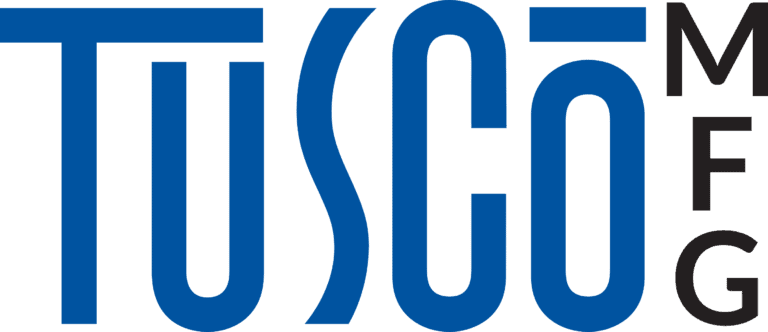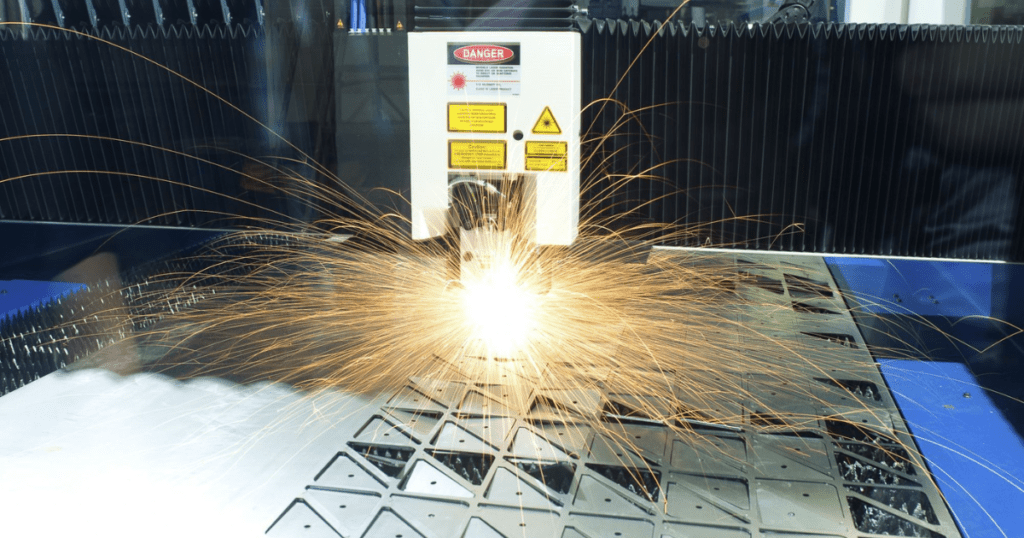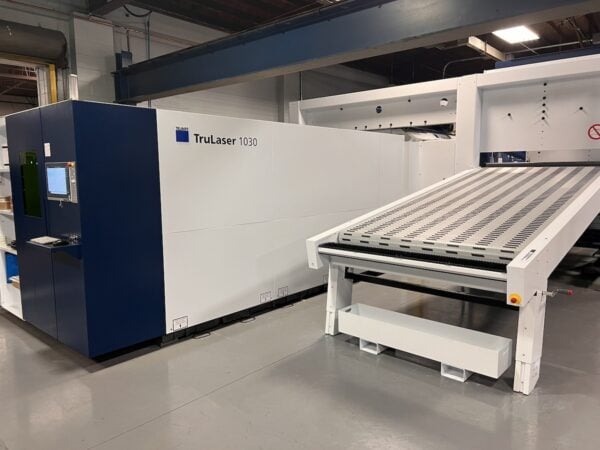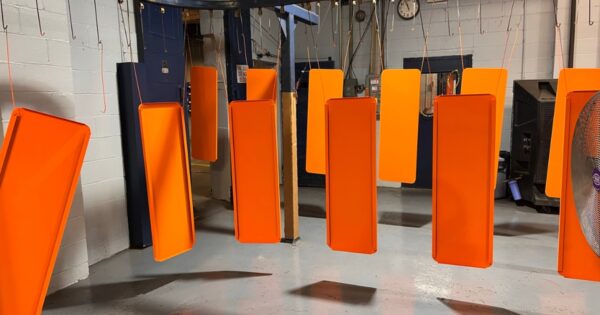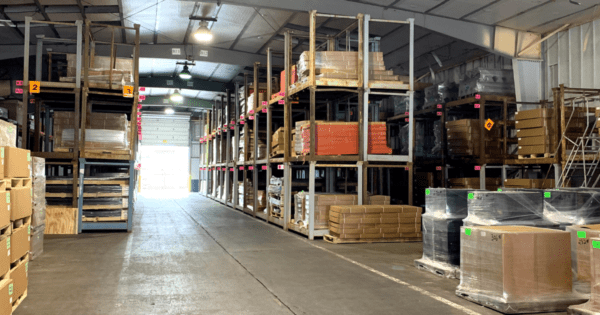While there are many methods for cutting sheet metal, laser cutting offers significant advantages. CO2 laser cutters provide a non-contact, high-quality method for cutting various metals. Its high efficiency, excellent repeatability, and significant cost and time savings make it an indispensable tool for fabricating parts across industries.
From Theory to a Fabrication Necessity
Laser is a well-known acronym for “Light Amplification by Stimulated Emission of Radiation.” Even though it’s an acronym, the term is so frequently used that it has become a commonplace word, generally written in lowercase letters.
The inception of laser cutting is deeply rooted in Albert Einstein’s theory of radiation, proposed in 1917. According to Einstein, an excited atom could revert to a lower energy state by emitting photons, a phenomenon he termed “spontaneous emission.” The direction the emitted photon travels is random, and its wavelength is determined by the energy difference between its excited state and ground state. When this photon encounters another atom with an electron in the same excited state, the initial photon can induce that atom to emit another photon. This emitted photon resonates at the same frequency and direction as the original photon, a process known as “stimulated emission.” The unidirectional movement of these photons is fundamental to understanding how a laser operates.
Fast forward to 1957, Gordon Gould expanded upon Einstein’s theory by proposing that stimulated emission could amplify light. Gould is also credited with introducing the term “Light Amplification by Stimulated Emission of Radiation,” which we know today as laser.
The practical application of laser theory started with Theodore Maiman, who built the first operational laser, a ruby laser, in 1960. As time progressed, laser technology significantly evolved. In 1964, Kumar Patel invented the CO2 laser, which became the primary type of laser used for cutting. Initial CO2 lasers, however, lacked sufficient power to offset the metal’s thermal conductivity. It wasn’t until the early 1970s that researchers at the University of California at Berkeley enabled CO2 lasers to penetrate 1/8-inch steel.
Originally, laser-cutting machines were costly and inefficient. With continuous technological advancements, laser cutting has become more affordable and accessible to a broad spectrum of businesses. Sheet metal laser cutting is now a staple in various industries, from consumer goods to renewable energy equipment, electronics, and medical devices.
Exploring the Advantages of Laser Cutting
Laser cutting offers multiple advantages, including precision, repeatability, and speed. And because it is computer-controlled, it ensures more precise cuts compared to other cutting methods.
Laser cutting can form complex shapes without necessitating tooling and additional machining. A contributing factor to this capability is the concentrated application of heat to a small area. Among all thermal cutting techniques, laser cutting has the least heat-affected zone, minimizing part distortion. Moreover, the kerf, or the width of material removed by cutting, is narrower in laser cutting than in other methods, enabling more intricate cuts.
The process can produce parts with such tight tolerances that they are virtually identical, ensuring high repeatability from cut to cut. Laser cutting maintains a consistent output, unlike traditional cutting tools that wear out and degrade the cut quality.
While reduced tooling and additional machining contribute to increased speed, laser cutting stands as one of the fastest cutting methods, independent of these factors. The cutting speed depends on the laser type, the material being cut, and its thickness.
Understanding the Operation of CO2 Lasers in Sheet Metal Cutting
CO2 lasers are the most prevalent laser cutters today. They consist of three components:
• Pump source: Provides the energy to generate the laser beam.
• Gain medium: Supplies the photons of light that create the laser beam.
• Optical resonator: Consists of aligned mirrors that reflect and amplify the photons, resulting in an intense, directional light beam.
The light emitted by the laser is monochromatic (single wavelength) and consists of parallel rays, forming a collimated beam. CO2 lasers use a carbon dioxide gas mixture, often containing nitrogen and helium, as an active gain medium for laser amplification. To generate the laser beam, the carbon dioxide molecules are electromagnetically stimulated. Upon returning to a lower energy state, these molecules emit photons, which create the beam. Since CO2 molecules are large, significant energy is required to excite them. When you excite lighter-weight helium and nitrogen and cause them to release photons, these photons can then excite the CO2 much more efficiently.
Optical resonance in the laser cavity (between a pair of mirrors) stimulates other excited molecules to emit more photons of the same frequency and phase, creating a coherent beam of light. Mirrors and a focusing lens direct and focus the beam onto the sheet metal. It generates intense heat that melts or vaporizes the metal, creating a narrow kerf (cutting path) as it moves across the sheet. Any molten metal is then blown away by a gas jet (Nitrogen gas assist), leaving a clean edge which is critical for powder coating.
Excellence Delivered by Tusco
At TuscoMFG, our sheet metal fabrication process begins with laser cutting, a vital operation. Our CO2 laser can cut light gauge stainless steel, carbon steel, and aluminum sheet metal from 18-gauge up to 1/4 inch with dimensions up to 5 ft x 10 ft. Featuring a dual-pallet system, our laser is enabled for continuous operation. While one pallet is engaged in cutting, we load and unload raw material on the second pallet, which ensures a seamless and efficient transition between jobs.
Nesting capabilities further boost our efficiency. This feature allows us to arrange multiple small, differently shaped parts on a single sheet or to use the leftover material from a job for smaller parts. This efficiency translates into savings for our customers.
We program the lasers offline, with the programs then relayed to the laser console. The program is retrieved by our operators based on the sequence outlined for each job and confirms that the correct sheet metal is loaded before initiating the cutting operation. They are tasked with managing raw materials, recording usage, and tracking lot numbers for traceability.
We engage our expert team members in multiple levels of training as they improve their proficiency. Entry-level operators learn to feed materials and operate the machine, while more advanced training equips operators to adjust cutting parameters. This comprehensive training can take six months or more.
We take pride in providing our customers with the speed and versatility they require. In our continuous effort to improve, we are in the process of procuring a Fiber laser, which will further increase our efficiency. Keep an eye out for our upcoming announcement!
Do you want to learn more about our capabilities? Let’s Talk!
